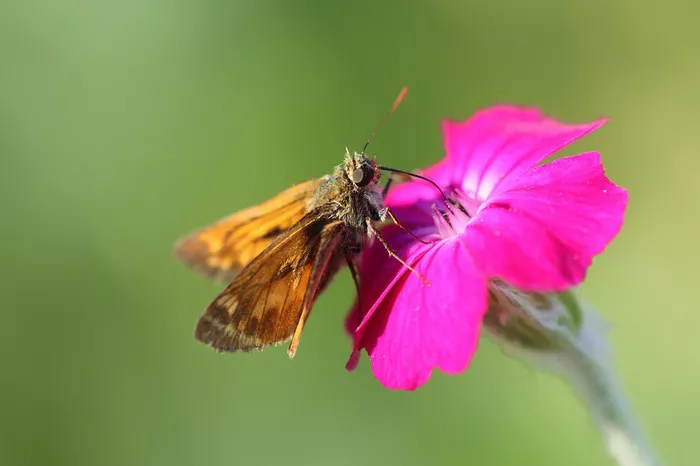Butterflies are not just beautiful creatures fluttering around; they play a crucial role in pollination and maintaining ecosystem balance. While flowers are commonly associated with attracting butterflies, there are various other methods to entice these winged wonders into your garden or outdoor space. Whether you have limited access to flowers or simply want to diversify your butterfly-attracting techniques, this guide will explore numerous strategies to create a butterfly-friendly environment without relying solely on blooms.
Understanding Butterfly Behavior and Preferences
Before delving into alternative methods of attracting butterflies, it’s essential to understand their behavior and preferences. Butterflies are attracted to specific environmental conditions and resources necessary for their survival and reproduction. Some key factors to consider include:
1. Sunlight: Butterflies are ectothermic creatures, meaning they rely on external heat sources to regulate their body temperature. They are often found basking in the sun to warm their wings and increase their activity levels.
2. Water: Like all living organisms, butterflies require water for hydration. Providing a shallow water source, such as a butterfly puddling area, can attract various species seeking moisture and essential minerals.
3. Host Plants: Female butterflies lay their eggs on specific host plants that caterpillar larvae feed on once hatched. Incorporating host plants into your landscape is crucial for supporting the complete lifecycle of butterflies.
4. Shelter: Butterflies seek shelter from harsh weather conditions and predators. Trees, shrubs, and other vegetation offer protection and resting spots for butterflies when they are not actively foraging.
5. Mineral Resources: Butterflies often gather essential nutrients from sources other than nectar, such as mud puddles or rotting fruits. These minerals are vital for their reproductive processes and overall health.
Now that we’ve established the basic requirements for attracting butterflies, let’s explore various techniques and strategies to create a butterfly-friendly habitat without relying solely on flowers.
1. Incorporate Native Plants
While flowers are a common attraction for butterflies, native plants play a crucial role in supporting local butterfly populations. Native plants have co-evolved with local butterfly species and provide essential resources such as host plants and nectar. Research native plant species in your area and incorporate them into your landscape design. Choose a diverse range of plants to attract a variety of butterfly species throughout the season.
2. Create a Butterfly-Friendly Habitat
Design your garden or outdoor space to mimic natural butterfly habitats. Incorporate a mix of sunny and shaded areas, as well as diverse vegetation layers to provide shelter and nectar sources. Include features like rocks, logs, and leaf litter to create additional resting spots and microhabitats for butterflies.
3. Provide Host Plants
As mentioned earlier, host plants are essential for supporting the reproductive lifecycle of butterflies. Research local butterfly species and their corresponding host plants, and integrate them into your landscape. Ensure there are ample quantities of host plants to accommodate egg-laying females and support healthy caterpillar populations.
4. Offer Alternative Nectar Sources
While flowers are a primary nectar source for butterflies, there are alternative options to attract them. Consider planting flowering herbs like dill, parsley, and fennel, which produce small, clustered flowers that butterflies are attracted to. Additionally, certain fruit-bearing plants like strawberries and raspberries can serve as nectar sources for butterflies when their flowers are in bloom.
5. Create a Butterfly Puddling Area
Butterflies often gather in damp areas to extract moisture and minerals from the soil—a behavior known as puddling. Create a butterfly puddling area by filling a shallow container with sand or soil and keeping it consistently moist. You can enhance the attractiveness of the puddling area by adding organic matter or mineral-rich additives like compost or crushed eggshells.
6. Provide Sunbathing Sites
Butterflies rely on sunlight to regulate their body temperature and increase their activity levels. Incorporate flat rocks or light-colored surfaces in sunny areas of your garden to create sunbathing sites for butterflies. These sun-warmed surfaces provide ideal basking spots for butterflies to absorb heat and energize themselves.
7. Maintain a Chemical-Free Environment
Pesticides and herbicides can be harmful to butterflies and other pollinators. Opt for natural pest control methods and avoid using chemical pesticides in your garden. Encourage biodiversity and natural predator-prey relationships to maintain a healthy ecosystem balance without relying on harmful chemicals.
8. Provide Shelter and Roosting Sites
In addition to food and water sources, butterflies require shelter from harsh weather conditions and predators. Planting dense shrubs, installing butterfly houses, or leaving patches of tall grass can provide shelter and roosting sites for butterflies. These features also contribute to the overall biodiversity of your garden.
Conclusion
While flowers are undoubtedly attractive to butterflies, they are not the only means of creating a butterfly-friendly environment. By understanding butterfly behavior and preferences and implementing alternative strategies such as incorporating native plants, providing host plants, and creating suitable habitats, you can attract butterflies to your garden or outdoor space without relying solely on blooms. By adopting these practices, you can contribute to the conservation of butterfly populations while enjoying the beauty and wonder they bring to your surroundings.


